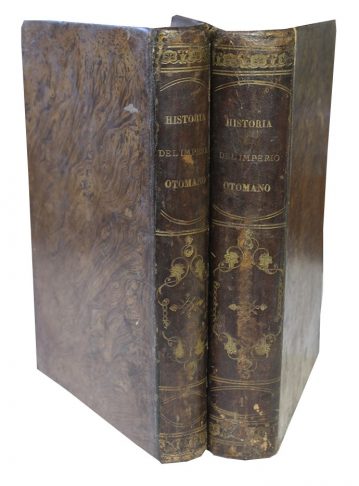Historia Contemporánea del Imperio Otomano, ó sea, de la Guerra de Oriente, desde la entrada del principe de Menschikoff en Constantinopla hasta el desenlace de la cuestion Turco-Rusa. TWO VOLUMES.
Vidal, Franciscode Paula.
Synopsis
“The Spanish historian Francisco de Paula Vidal discusses in this work the siege of Vienna and the battle of 1683 between the Christian European forces and the Ottomans. The battle was fought by the Habsburg Monarchy, the Polish-Lithuanian Commonwealth and the Holy Roman Empire, under the command of King John III Sobieski against the Ottomans and their vassal and tributary states. The battle marked the first time the Commonwealth and the Holy Roman Empire had co-operated militarily against the Ottomans, and it is often seen as a turning point in history, after which “the Ottoman Turks ceased to be a menace to the Christian world”. In the ensuing war that lasted until 1699, the Ottomans lost almost all of Hungary to the Holy Roman Emperor Leopold I.
Francisco de Paula Vidal and other historians suggest the battle marked the turning point in the Ottoman–Habsburg wars, a 300-year struggle between the Holy Roman and the Ottoman Empires. In fact, during the 16 years following the battle, the Austrian Habsburgs gradually recovered and dominated southern Hungary and Transylvania, which had been largely cleared of Ottoman forces. The battle is also noted for including the largest known cavalry charge in history.
Although the Ottoman siege cut virtually every means of food supply into Vienna, the military relief that reached the boundaries of the city and the attack against the Ottomans resulted in their defeat and retreat. Contemporary Ottoman historian, Silahdar Findiklili Mehmed Agha (1658–1723), described the battle as an enormous defeat and failure for the Ottoman Empire, the most disastrous since the foundation of Ottoman statehood in 1299.
Bibliographic reference: Palau 131600 for the 1690 first edition.






